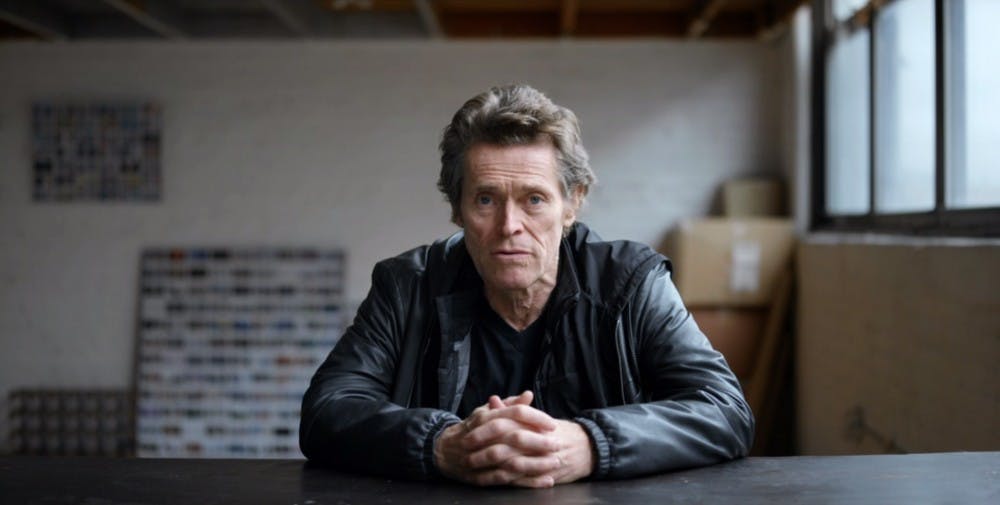It’s easy to think that there aren’t any films being produced that capture the mundane aspects of everyday American life. However that’s not entirely true; we do get these films, but they are often independent.
Their budget isn’t very large, they don’t get marketed as much as larger studio films and they’re often difficult to find at large cineplexes. Luckily, here in the Baltimore we are fortunate to have the Charles Theatre just 10 minutes from campus.
Small and home to many 65-year-old couples, the Charles Theatre often showcases films that you may not have heard of and, often in the winter, Oscar-nominated films.
During the film festival season, which primarily runs from May through September, the hype surrounding these independent films peaks. One of these is Sean Baker’s sixth feature film The Florida Project starring Willem Dafoe, Brooklynn Prince and Bria Vinaite.
The Florida Project comes off the heels of Baker’s film Tangerine, which follows a transgender sex worker, who found out that her pimp/boyfriend cheated on her while she was in jail.
Tangerine was shot entirely on an iPhone 5s (something you wouldn’t be able to do on an Android) and is a joy to watch. It’s on Netflix and only 85 minutes long, so I recommend it.
With that in mind — as well as the reception The Florida Project received out of Cannes — it was safe to say that I was immensely excited to watch The Florida Project, and boy did it not disappoint.
The Florida Project follows the daily life of six-year-old Moonee (Prince) and her mother Halley (Vinaite) in Kissimmee, Fla. Bobby (Dafoe) is the big-hearted manager of the motel in which Moonee and Halley live.
The main characters are a part of the extended-stay motel community in an area located right outside Disney World, an area favored by tourists. This is evident throughout the film and plays a subtle role in showing contrasting lifestyles.
Baker uses long takes to fully display the beautiful colors that can be found in the town, in what can only be described as a Wes Anderson set come to life. The pastels accentuate the innocence and youth that the viewer follows through the entire film.
It often feels as if we are simply tracking Moonee throughout her summer escapades: playing with her friends, harassing the tourists and interacting with Halley and/or Bobby.
Moonee’s relationship with her mother is as strong as can be; her mother’s youth is conducive to Moonee’s lackadaisical lifestyle and it’s in this where we begin to realize how truly heartbreaking this entire film is.
Among other things, we see Halley attempting to sell perfume outside a country club to afford her daily rent, often with Moonee in tow. Of course to Moonee this isn’t anything tragic, it’s just normal.
Therefore when we reach the emotional climax of the film, you can’t do anything but wish for Moonee to be happy. This emotion is elevated by performances that are breathtaking, considering the inexperience of both actresses. It’s refreshing and feels all the more authentic, as if this is a documentary and not a fictional film.
That’s the beauty of The Florida Project and other films as of late (Hell or High Water comes to mind); they perfectly capture the anxieties of forgotten communities. There are people that live this type of life and suffer through it; it’s a brutal reality that we tend to forget exists.
Willem Dafoe’s character Bobby is particularly fantastic. You feel for him, and his paternalistic behavior is a wonderful addition to a film in which everyone seems to lack any sort of supervision.
The Florida Project is a magnificent addition to a new genre of films that cover the “Real American” life. Through the point of view of someone innocent (Moonee) we fail to see the anxieties that are around us.
It’s a tragic perspective on life that is augmented by our own memories as children and by the memories that the people we love have as well. After all, we don’t all come from the same background, and, for all we know, this could be someone’s actual story.
So please go watch this film, and support small films in general because we need to bring more awareness to these communities, to these children. It’s the least we can do.





